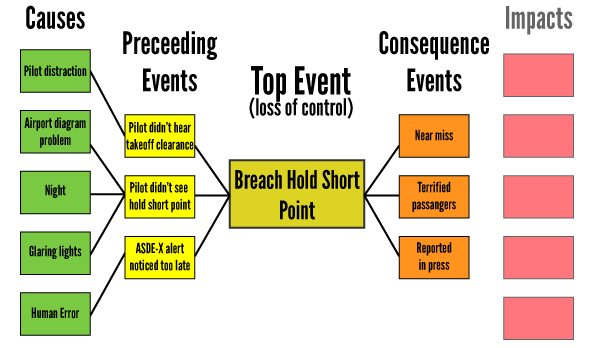Three: Establish Consequences After the Top Event
Next we need to look at what the direct consequences of breaching the runway are. These consequences are the intermediary events before our Top Event and final Impacts, or damages. In our scenario, the direct consequences were:
- Rolled onto the runway;
- Reported in press; and
- Terrified passengers.
It’s important to distinguish between consequences and Impacts. Consequences do not cause Impact damages themselves, but lead directly to damages.

Four: Establish All Consequences (Damages)
Impacts, also called "risks" and "consequences", are always characterized by damages. Damages could be to persons, equipment, reputation, money, etc. – anything that hurts your organization. Picking out damages is usually pretty easy.
Here are a few examples of Impacts in bowtie analysis:
- Fines;
- Loss of life;
- Injury to persons;
- Damage to aircraft or equipment;
- Loss of aircraft or equipment;
- Reputation damage;
- Loss of stock value (financial loss);
- Reduced passenger revenue;
- Reduced confidence in safety program by employees (safety culture); and
- Possible litigation.
Each item in red causes an element of damage to the company.
